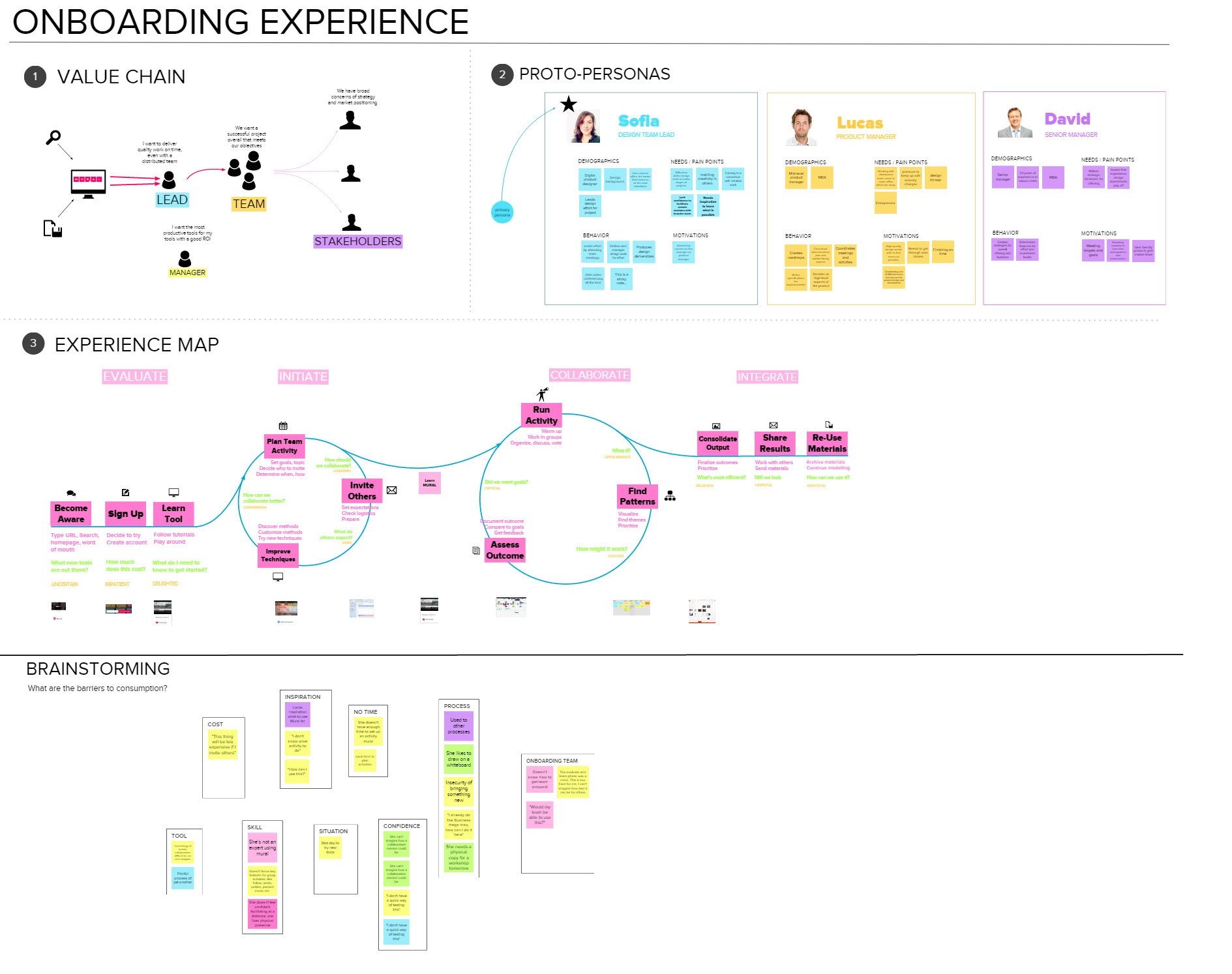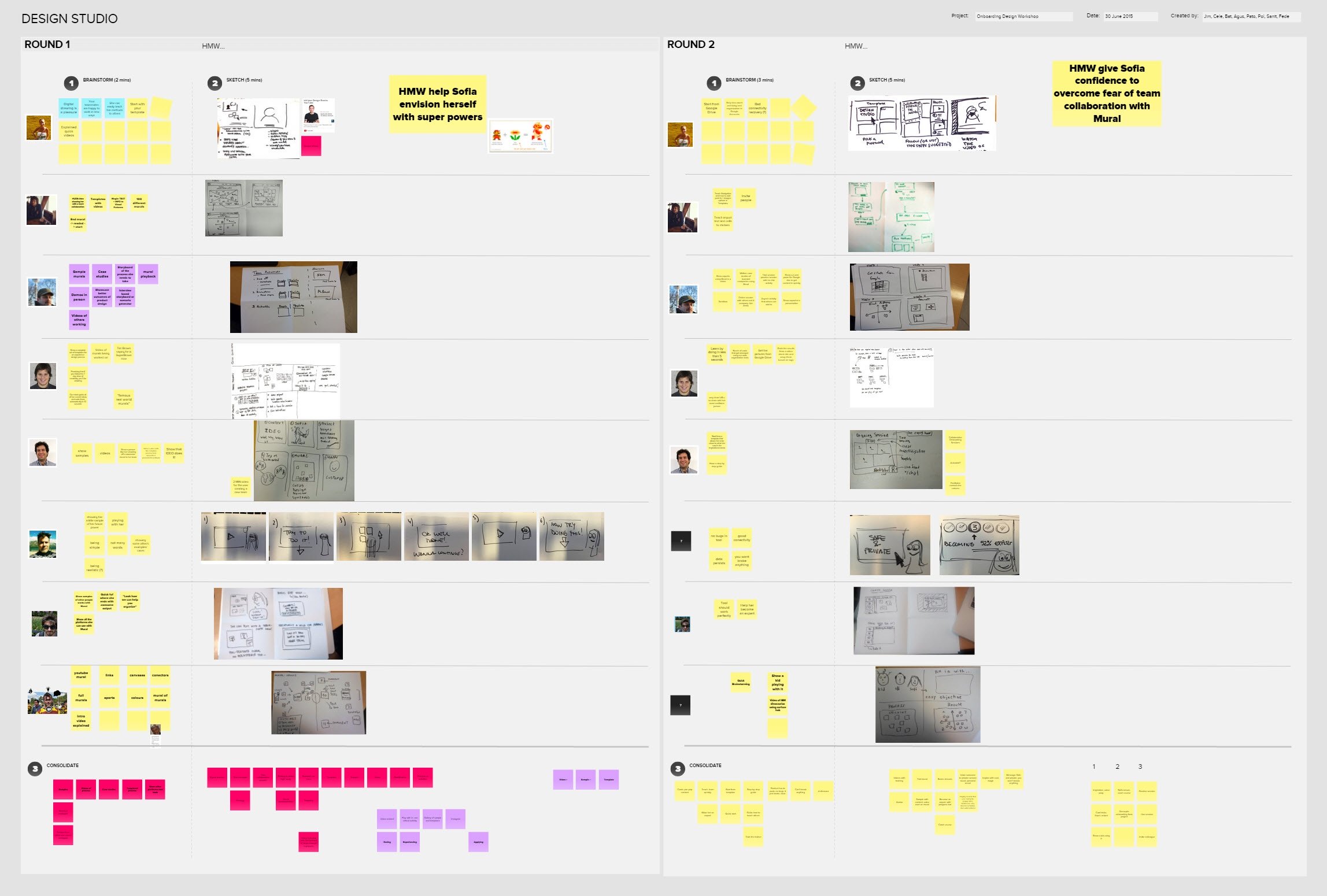At MURAL, we used our own product to improve our customers' onboarding experience. We kicked off the effort with a one-and-a-half day workshop in Buenos Aires with a group of eight people.
The workshop had three parts.
A study in rapid online mapping
Part 1: Empathize
The goal of the exercise was to understand the user’s experience. To do this, I used MURAL to map out three different aspect of an onboarding experience before the session began, seen in the image below.

1. Value chain (upper left). Mapping a customer value chain provides an overview of the actors involved and their relationships to one another. It's a good way to see all of the stakeholder involved.
2. Proto-Personas. In the upper right of the image above you’ll see three proto-personas. These were based on the actors in value chain diagram. Sophia, the design lead, was our primary persona for this exercise.
3. Experience Map. In the middle is an experience map based on previous research I had conducted in the area, as well as recent customer interviews. The circular shapes in the diagram represent repeating behavior.
As a group, we discussed each these elements to understand the context of the onboarding experience. The digital format of the diagram allowed us to update it on the fly. For instance, we added details to the proto-personas as we discussed them.
Part 2: Envision
We then brainstormed barriers to consumption. We asked ourselves, “What is keeping the primary persona from using our service repeatedly?”
With a large virtual area to work in, it was easy to record answers right below the experience map. The results of our brainstorming session were clustered into categories and then prioritized using the dot voting feature built into MURAL.
Then, we conducted an exercise called a design studio to find solutions. For each barrier we identified earlier, participants individually sketched possible solutions. The sketches were photographed and uploaded to a design studio mural for everyone to see, shown in the image below.

Part 3: Evaluate
After lunch the team broke into two groups. Each focused on consolidating the sketches into a single solution. Our aim was to create testable artifacts by the end of the day.
Thanks to Usertesting.com, we quickly got feedback on our proposed solutions. The tests ran overnight, and by the next morning we already had initial feedback on the artifacts we had produced the day before.
Some of our assumptions were validated, others were disproven. We used the feedback to iterate on the proposed designs. Then, we created a concrete plan for implementation over the next few months.
Conclusion
This rapid approach allowed us to go from understanding the existing experience to prototyping to testing in less than two days. There were no written proposals, reports, or other documents.
Experience mapping does not have to take a lot of time. Using an online tool like MURAL makes the process even quicker. More than that, working online also allowed us to combine activities in one place for a better overview.
An interesting aspect of this exercise was that the team was co-located. We met face to face for all of the activities, yet still used online tools to capture our work. Forcing ourselves to work digitally allowed us to loop in others later who were not present at the workshop. We could also continue working remotely in the weeks to come.
Creating the experience map online makes the overall process ongoing rather than a static, one-time event, regardless of where people are. Experiences are dynamic, and creating an experience map online allows your process to be, too.
See our webinar on mapping experiences online for more:




.avif)





